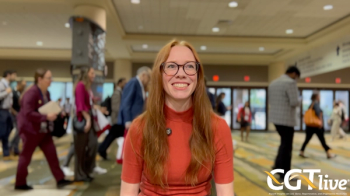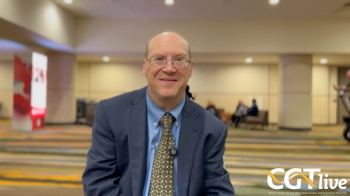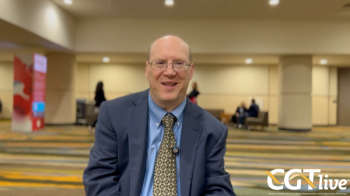Neurogene’s NGN-101, an investigational adeno-associated virus (AAV) vector-based gene therapy intended to treat neuronal ceroid lipofuscinosis (Batten) Subtype 5 (CLN5) disease, is currently being assessed in a phase 1/2 clinical trial (NCT05228145).1 The investigational new drug application for the trial was cleared in September of 2021, and the study initiated enrollment on January 31, 2022.
Led by study director Xiomara Q. Rosales, MD, the director of clinical development at Neurogene, the study is following an open-label, dose-escalation design. Participants will be assigned to either a lower dose cohort (cohort 1) or a higher dose cohort (cohort 2). NGN-101 will be delivered to each participant via both intracerebroventricular and intravitreal routes on the same day. The trial has an estimated completion date of November 2028.
“The phase 1/2 trial of NGN-101 represents the first trial to assess the treatment of both neurodegenerative and ocular disease manifestations of Batten disease and is a potentially disease modifying treatment for CLN5 disease,” Rachel McMinn, PhD, the founder and chief executive officer of Neurogene, told CGTLive™ in a recent request for comment. “In preclinical studies, NGN-101 has demonstrated the potential to slow or halt the key features of disease progression, including associated vision and motor declines. This clinical trial is currently enrolling, and we expect preliminary clinical data in the second half of 2024.”
About the Phase 1/2 Study
Trial Name:
Gene Therapy Study for Children With CLN5 Batten Disease (CLN5-200)
ClinicalTrials.gov Identifier:
NCT05228145
Recruitment Contact:
Contact Center
+1 877-237-5020
[email protected]
Estimated Completion Date:
November 2028
In the United States, the lead study site is University of Rochester; activity at this site will be led by Jonathan W. Mink, MD, PhD, Frederick A. Horner MD distinguished professor in pediatric neurology, chief of child neurology, and director of the University of Rochester Batten Center. The study is also recruiting at the Great Ormond Street Hospital for Children (GOSH), London, in the United Kingdom, with Paul Gissen, MD,a clinical professor in pediatric metabolic medicine at the University College London GOS Institute of Child Health and an honorary consultant at GOSH, serving as the primary contact.
“CLN5 is a devastating and rapidly progressive neurodegenerative disease in children that leads to vision loss, cognitive and motor impairment, seizures and, ultimately, premature death,” Mink said in statement.1 “This trial of NGN-101 will move research forward in developing a potentially disease-modifying treatment for CLN5 disease, providing hope to individuals and families where currently none exists.”
The study’s primary end points include the incidence, type, severity, and frequency of treatment emergent adverse events (AEs), serious AEs, clinical laboratory abnormalities, new nerve conduction study abnormalities, and new physical and neurologic exam abnormalities. The secondary end points include the change from baseline in Hamburg Scale, motor and language domain scores; total score and individual domains of the Unified Batten Diseases Rating Scale; color vision measured using Ishihara color blindness testing; and visual acuity measured using Teller acuity cards, Lea symbol chart, Landolt C chart, or low contrast visual acuity depending on each participant’s individual cognitive and visual function. The Caregiver Global Impression of Change will also be assessed throughout the study as a secondary end point. Each of the primary and secondary end points will be measured across multiple visits in a 5-year time frame.
The trial includes children aged 3 to 9 years who have a molecular genetic diagnosis in the CLN5 gene; a confirmed clinical diagnosis of CLN5 disease; impaired motor function, language function, and/or visual acuity; ability to walk with or without assistance; and the ability to undergo the procedures and assessments required by the protocol.
On the other hand, the trial will exclude patients with any other neurologic disease or illness that may have caused cognitive decline before study entry; a pathogenic or clinically suspected seizure-associated mutation in a gene other than CLN5; active or severe infections within 30 days before treatment; a total antiAAV9 antibody titer of more than 1:400; the expectation of major surgery in the next 24 months; participation in other IND, investigation device exemption, or equivalent clinical studies within the precious 6 months; any history of participation in another clinical trial that involved receiving a gene therapy vector or stem cell transplantation; any concurrent participation in a study that uses similar study assessments; prior treatment with chemotherapy, radiotherapy, or immunosuppressive therapy in the previous 3 months; prior immunizations within 30 days of treatment; necessitation of any ventilatory support; or use of prohibited medications. Patients that have had status epilepticus lasting longer than 5 minutes or more than 1 seizure within a 5-minute period, without returning to a normal level of consciousness between episodes, in the 30 days before study treatment will also be excluded from participation.
NGN-101 consists of an AAV9 vector that delivers a codon-optimized human CLN5 transgene that encodes for the CLN5 intracellular trafficking protein.1,2 The gene therapy was granted orphan drug designation by the FDA in 2020 and the European Medicines Agency in 2021.
Neurogene is among several companies currently developing gene therapies for the various subtypes of Batten disease. Among the others are REGENXBIO, which is developing RGX-181 and RGX-381 for the CLN2 subtype; Lexeo Therapeutics, which is developing LX1004 for the CLN2 subtype; and Taysha Gene Therapies, which is developing TSHA-118 for the CLN1 subtype.3-5 RGX-381 is specifically intended to address the ocular manifestations of CLN2; as of March 30, 2023, a phase 1/2 clinical trial (NCT05791864) for the therapy is active, but not yet recruiting. According to Lexeo and REGENXBIO, respectively, LX1004 has entered clinical development and RGX-181 is still in preclinical development.
For 2023’s International Batten Awareness Day, which is observed annually on June 9, CGTLive™ spoke with Ineka Whiteman, PhD, head of research and medical affairs, Batten Disease Support and Research Association (BDSRA) Australia, consultant to BDSRA Foundation (USA) and Beyond Batten Disease foundation, about the current state of care in Batten disease and the potential of gene therapy approaches in the field.
“At present there are active clinical trials for gene therapies for the treatment of CLN5 disease (Neurogene) and CLN7 disease (UT Southwestern), respectively,” Whiteman said. “We have also seen recent gene therapy trials in CLN3 and CLN6 disease (both Amicus Therapeutics), however these have since been discontinued for a variety of reasons. In addition, a gene therapy for treatment of CLN1 disease (Taysha Gene Therapies) was due to commence phase 1/2 studies in 2022 yet remains on hold, likely due to financial constraints as a result of the biotech sector downturn.”
Neurogene recently entered into an agreement to merge with Neoleukin Therapeutics.6 Alongside the July 2023 announcement of the merger, Neurogene also announced an oversubscribed $95 million private financing and indicated that it is in a position to fund its program in Batten disease into the second half of 2026.
REFERENCES
1. Neurogene announces FDA clearance of IND for NGN-101 gene therapy to treat CLN5 Batten disease. News release. Neurogene Inc. September 14, 2021. Accessed August 17, 2023. https://www.neurogene.com/press-releases/neurogene-announces-fda-clearance-of-ind-for-ngn-101-gene-therapy-to-treat-cln5-batten-disease/
2. Neurogene announces EMA grants orphan drug designation to CLN5 Batten disease gene therapy. News release. Neurogene Inc. June 29, 2021. Accessed August 17, 2023. https://www.neurogene.com/press-releases/neurogene-announces-ema-grants-orphan-drug-designation-to-cln5-batten-disease-gene-therapy/
3. Therapeutic Pipeline. REGENXBIO. Website. Accessed August 17, 2023. https://www.regenxbio.com/therapeutic-programs/
4. Pipeline. Lexeo Therapeutics. Website. Accessed August 17, 2023. https://www.lexeotx.com/pipeline/
5. Pipeline. Taysha Gene Therapies. Website. Accessed August 17, 2023. https://tayshagtx.com/pipeline/
6. Neurogene and Neoleukin announce definitive merger agreement. News release. Neurogene Inc. July 18, 2023. Accessed Augst 17, 2023. https://www.neurogene.com/press-releases/neurogene-and-neoleukin-announce-definitive-merger-agreement/

















































